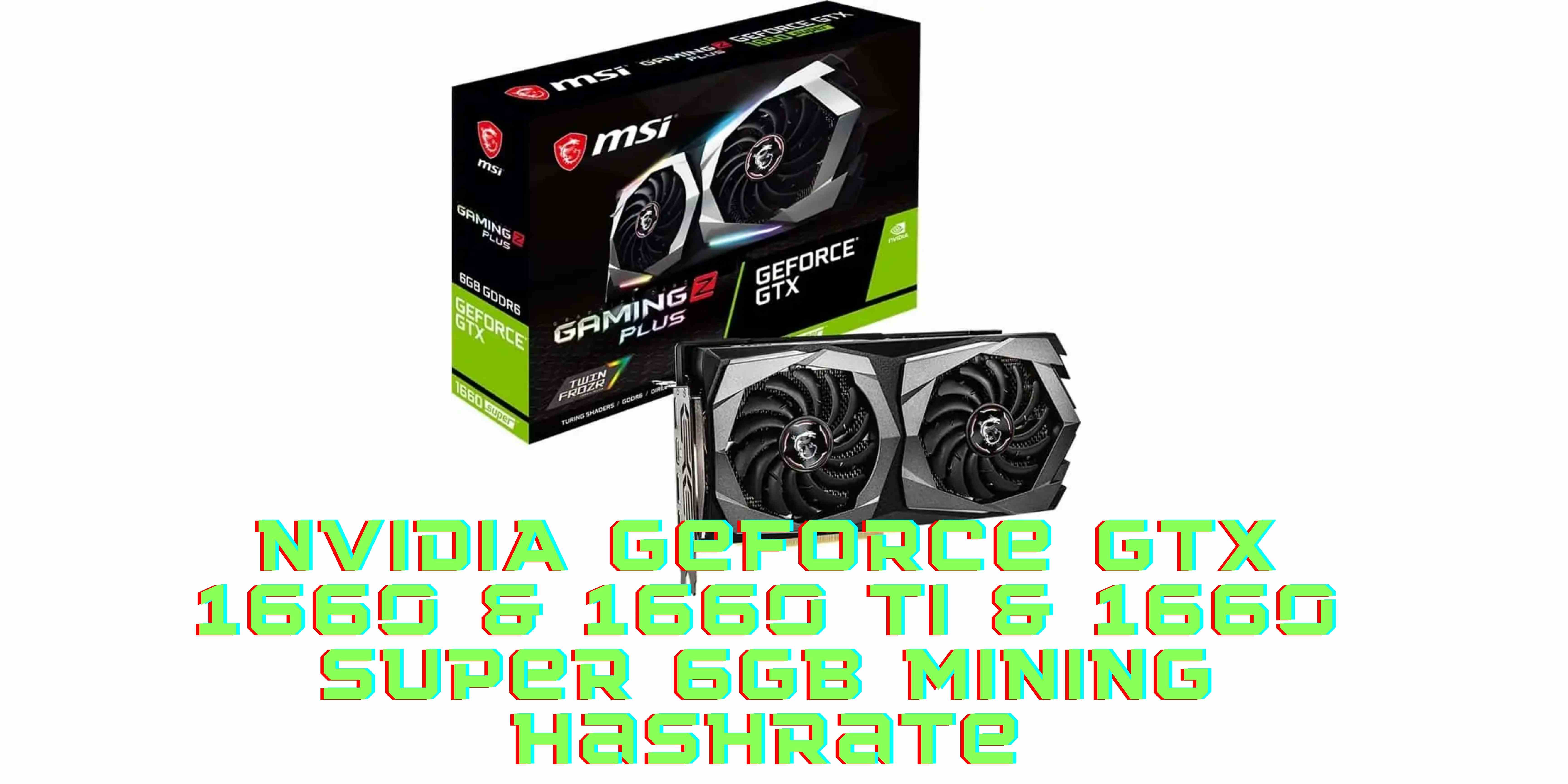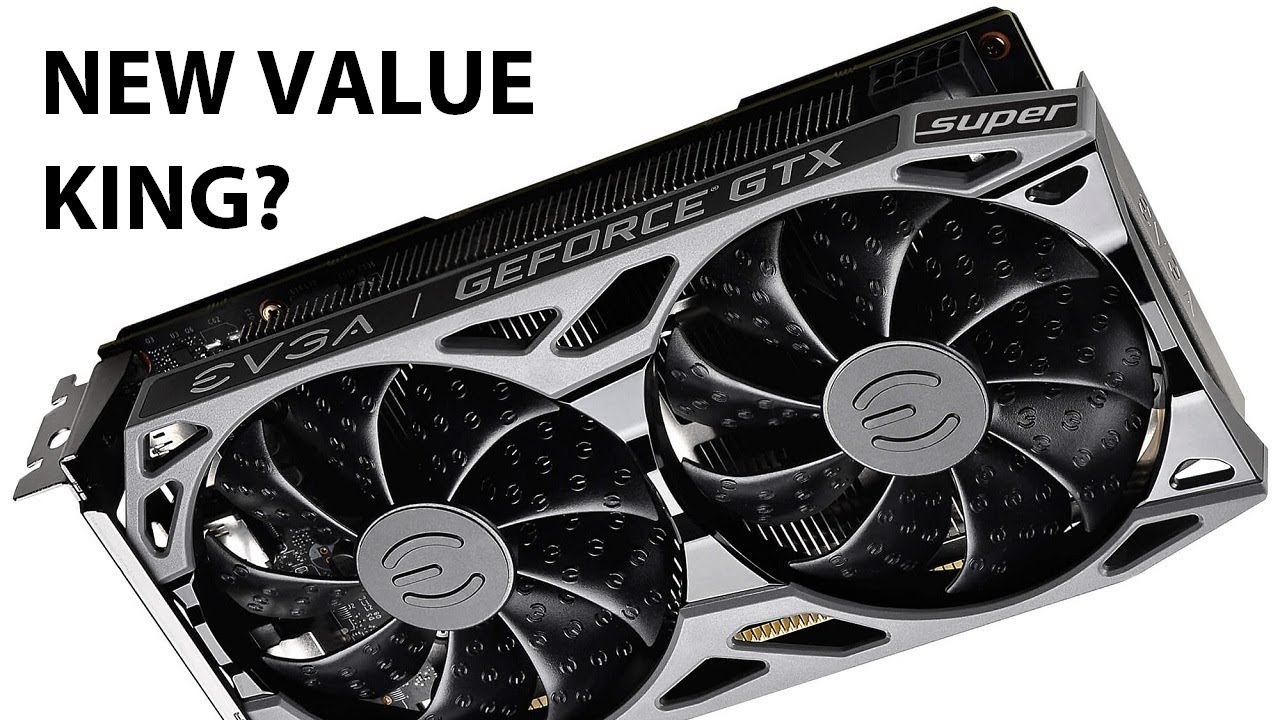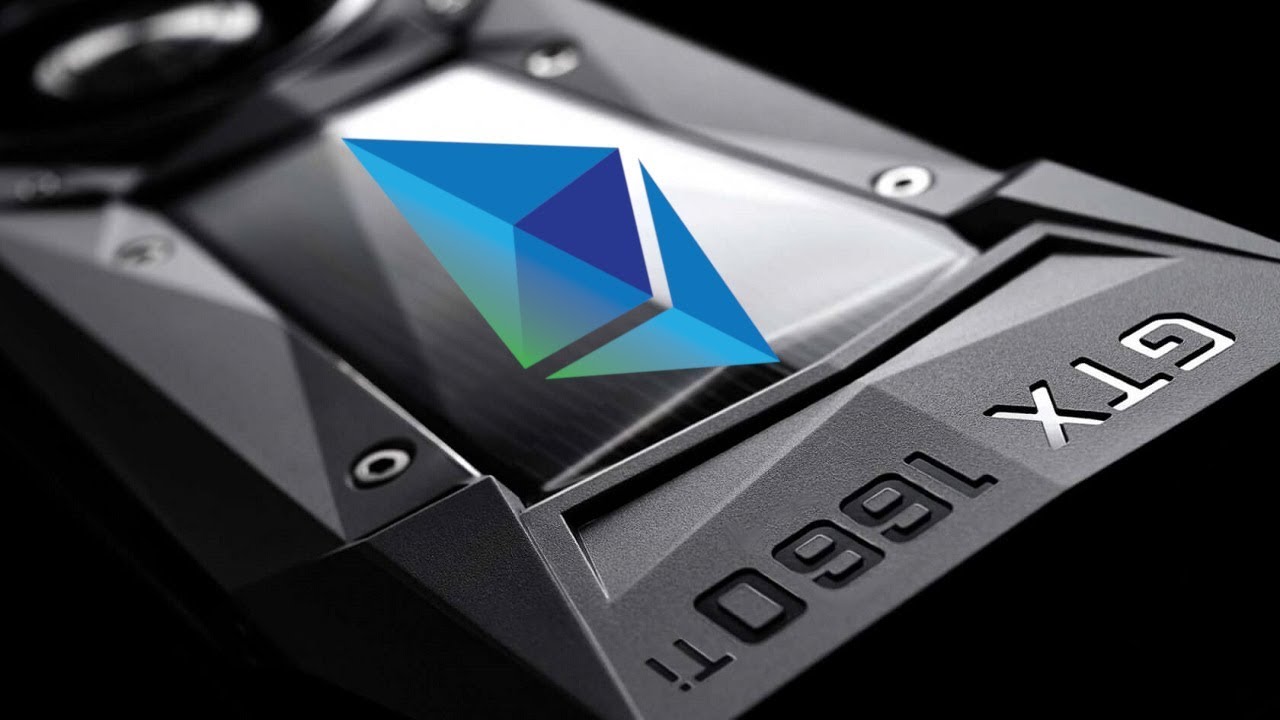NVIDIA GTX 1660 Ti & Super Mining Hashrate For Crypto Mining
In this article, you will learn about the specifications, overclock settings, and the NVIDIA GTX 1660 Ti & Super mining hashrate. The GTX 1660 Super is one of Nvidia's most current cards. It was launched on October 29, 2019 and continues to be relevant.
Author:Elisa MuellerReviewer:James PierceMar 28, 2022181 Shares2.7K Views

In this article, you will learn about the specifications, overclock settings, and the NVIDIA GTX 1660 Ti & Super mining hashrate.
The GTX 1660 Super is one of Nvidia's most current cards. It was launched on October 29, 2019 and continues to be relevant. It is a mid-range card, priced at $229 at launch.
The card comes equipped with 6 GB of GDDR6 memory, the Turing architecture, and a memory bandwidth of 14 Gbps. According to the manufacturer, the GTX 1660 Super outperforms its younger sibling by 20%. The Nvidia GTX 1060 (6 GB) has a 75% advantage. The 1660 Super, like other Nvidia graphics cards, is capable of mining ZCoin, Ethereum, Ravencoin, and Beam, among other popular cryptocurrencies.
NVIDIA GTX 1660 Super 6GB Specifications
- GPU Engine Specs: 1408
- NVIDIA CUDA® Cores NA
- Giga Rays/s 1785
- Boost Clock (MHz) 1530
- Base Clock (MHz)Memory Specs: 14 Gbps
- Memory Speed 6GB GDDR6
- Standard Memory Config 192-bit
- Memory Interface Width 336
- Memory Bandwidth (GB/sec)Technology Support: No
- Hardware Accelerated Ray Tracing Yes
- NVIDIA® GeForce Experience Yes
- NVIDIA® Ansel Yes
- NVIDIA® Highlights Yes
- NVIDIA® G-SYNC™ Compatible Yes
- Game Ready Drivers Yes
- Microsoft® DirectX® 12 API, Vulkan API, OpenGL 4.6 Yes
- DisplayPort 1.4a, HDMI 2.0b (2)Yes
- HDCP 2.2 Yes
- NVIDIA® GPU Boost™Yes
- VR Ready No
- Designed for USB Type-Câ„¢ and VirtualLinkâ„¢Yes (Turing)
- NVIDIA Encoder (NVENC)Display Support: 7680×4320@120Hz
- Maximum Digital Resolution(1)DP 1.4a, HDMI 2.0b, DL-DVI-D
- Standard Display Connectors Yes
- Multi Monitor Yes
- HDCPGraphics Card Dimensions: 4.37″Height 5.7″Length 2-SlotWidth
- Thermal Power Specs: 93
- Maximum GPU Temperature (in C) 125
- Graphics Card Power (W) 450
- Recommended System Power (W)(3) 8-pin
- Supplementary Power Connectors
NVIDIA GTX 1660 Super 6GB Mining Hashrate For Each Algorithm (Power Consumption 70 Watts/Hour)
- DaggerHashimoto [ EtHash : (ETH) & (ETC) ] Ethereum Mining Hashrate : 31 MH/s

I'm Going To Get A 1660 Super For Mining!
Daily Mining Hash Rate By NVIDIA Geforce GTX 1660 Super 6GB
- CuckooCycle Mining Hashrate 4.35 G/s
- X16Rv2 Mining Hashrate : 16.25 MH/s
- Lyra2Z Mining Hashrate : 2.45 MH/s
- Lyra2REv3 Mining Hashrate : 34.4 MH/s
- ZHash Mining Hashrate : 37 Sol/s
- Handshake Mining Hashrate : 0.152 GH/s
- BeamV3 Mining Hashrate : 10.5 Sol/s
- Kawpow Mining Hashrate 12.56 MH/s
- Octopus Mining Hashrate : 24.5 MH/s
NVIDIA GTX 1660 Ti 6GB Mining Hashrate For Each Algorithm (Power Consumption 60 Watts/Hour)
- DaggerHashimoto [ EtHash : (ETH) & (ETC) ] Ethereum Mining Hashrate : 30 MH/s

GTX 1660 Ti Ethereum Hashrate
NVIDIA GTX 1660 Ti 6GB Ethereum Overclock/Undervolt Settings
- Hashrate : 31 Mh/s consuming 85 Watts
- Core Voltage (VDD): NA
- Power Limit (%): 60% or 80 (W)
- Core Clock (CClock): -200
- Memory Clock (MClock): +1100 or 2200
- Fan Speed (%): 70% or more/less based on your temps.
- CuckooCycle Mining Hashrate 4.8 G/s Consuming 90 Watts/Hour
- X16R Mining Hashrate : 16.18 MH/s
- CryptoNightR Mining Hashrate : 0.5 kH/s
- RandomXmonero Mining Hashrate : 0.5 kH/s
- Eaglesong Mining Hashrate : 0.32 GH/s
- X16Rv2 Mining Hashrate : 14.3 MH/s Consuming 105 Watts/Hour
- Lyra2REv3 Mining Hashrate : 44 MH/s Consuming 90 Watts/Hour
- ZHash Mining Hashrate : 41.9 Sol/s
- Handshake Mining Hashrate : 0.154 GH/s
- BeamV3 Mining Hashrate : 16.1 Sol/s
- Kawpow Mining Hashrate 15.6 MH/s
- Octopus Mining Hashrate : 25.8 MH/s
To optimize hash rate, you will almost certainly need to adjust extra parameters. Choose an ideal GPU overclocking value to maximize hash rate while maintaining an acceptable level of energy usage. Algorithms may require either core or memory overclocking, or a combination of the two. The primary overclocking premise is to achieve consistent work and a maximum hash rate while maintaining an acceptable level of energy consumption. It's critical to keep in mind that each GPU is unique. If one can overclock the core to 2000 MHz, another equivalent one may only support overclocking to 1900 MHz. Ensure that you alter the overclocking settings for each card separately.
NVIDIA GTX 1660 6GB Mining Hashrate For Each Algorithm (Power Consumption 50 Watts/Hour)
- DaggerHashimoto [ EtHash : (ETH) & (ETC) ] Ethereum Mining Hashrate: 25 MH/s

GTX 1660 (Non Ti) Mining HASHRATES!
- CuckooCycle Mining Hashrate: 3.9 G/s
- GrinCuckatoo32 Mining Hashrate: 0.22 G/s
- ZHash Mining Hashrate: 38.4 Sol/s
- BeamV3 Mining Hashrate: 14.7 Sol/s
- Kawpow Mining Hashrate: 10.3 MH/s
- Octopus Mining Hashrate: 22.5 MH/s
- X16R Mining Hashrate: 14.82 MH/s
Is The GTX 1660 Ti Good For Mining?
While the GTX 1660 ti is an extremely efficient miner, it is not considerably more productive than the significantly less expensive RX 570 (8GB) or RX 580 (8GB). On the other hand, the Radeon VII is a mining beast. It's always been this way: if you want to game, get NVidia; if you want to mine, stick with AMD.
Is 1660 Super Good For Mining?
According to the manufacturer, the GTX 1660 Super outperforms its younger sibling by 20%. The Nvidia GTX 1060 (6 GB) has a 75% advantage.The 1660 Super, like other Nvidia graphics cards, is capable of mining ZCoin, Ethereum, Ravencoin, and Beam, among other popular cryptocurrencies.
Conclusion
The GeForce GTX 1660 Super and GeForce GTX 1660 Ti were found to mine Ethereum at 20.3 Mh/s and 23.6 Mh/s, respectively, using reference clock speeds. This means that the GeForce GTX 1660 Super with GDDR6 memory mines approximately 16% faster than the GeForce GTX 1660 Ti with GDDR5. On paper, the GeForce GTX 1660 Super boasts a 50% increase in theoretical memory bandwidth due to the use of GDDR6 memory, but this does not translate into a 50% increase in GPU mining performance.
By manually overclocking the memory on each card, the mining hashrate was increased to 24.6 and 27.7 Mh/s, respectively. This results in a performance differential of less than 13% between the two graphics cards.
Jump to
NVIDIA GTX 1660 Super 6GB Specifications
NVIDIA GTX 1660 Super 6GB Mining Hashrate For Each Algorithm (Power Consumption 70 Watts/Hour)
Daily Mining Hash Rate By NVIDIA Geforce GTX 1660 Super 6GB
NVIDIA GTX 1660 Ti 6GB Mining Hashrate For Each Algorithm (Power Consumption 60 Watts/Hour)
NVIDIA GTX 1660 Ti 6GB Ethereum Overclock/Undervolt Settings
NVIDIA GTX 1660 6GB Mining Hashrate For Each Algorithm (Power Consumption 50 Watts/Hour)
Is The GTX 1660 Ti Good For Mining?
Is 1660 Super Good For Mining?
Conclusion

Elisa Mueller
Author

James Pierce
Reviewer
Latest Articles
Popular Articles